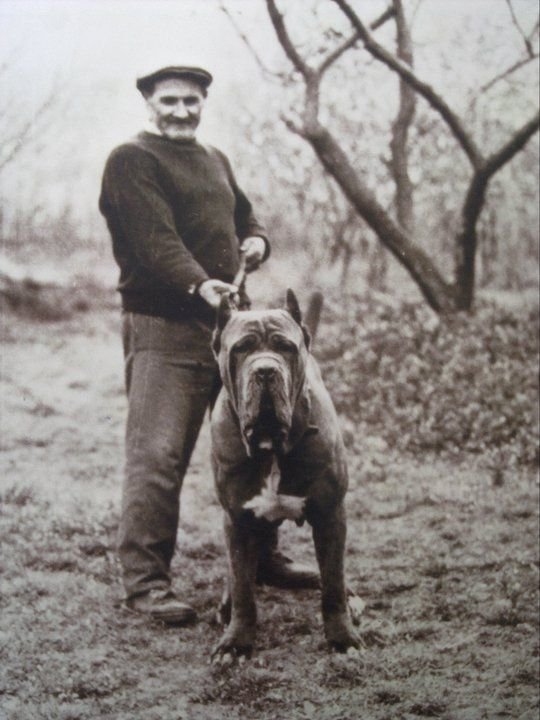About the Breed
Smart, trainable, and of noble bearing, the assertive and confident Cane Corso is a peerless protector. The Corso's lineage goes back to ancient Roman times, and the breed's name roughly translates from the Latin as 'bodyguard-dog.' At nearly 70 cm at the shoulder and often weighing more than 45 kg, with a large head, alert expression, and muscles rippling beneath their short, stiff coat, Corso is at a glance intimidating creatures. Their imposing appearance is their first line of defense against intruders. As one writer put it, 'An understated air of cool competence, the kind of demeanor you'd expect from a professional bodyguard, is the breed's trademark.' Corso is intelligent, loyal, eager to please, versatile, and intensely loyal to their humans, but are also assertive and willful, and can end up owning an unwitting owner. As with any other big guardian dog, responsible breeding and early socialization with people and other dogs are vital.
History
The Cane Corso (KAH-neh-KOR-soh; plural: Cani Corsi) belongs to a subcategory of working breeds called molossus dogs, or mollosers, named for the Molossi, an ancient Greek people thought to have bred giant, big-boned guardian dogs of Mastiff type. At the height of the Roman Empire’s power, the legions that subdued and occupied the Greek islands brought mollosers back to Italy and bred them to native Italian breeds.
The offspring produced by these crosses were ancestors of the modern Corso and its larger relative, the Neapolitan Mastiff. The original Corsi were used as dogs of conquest who earned their stripes as “pireferi,” fearless dogs who charged enemy lines with buckets of flaming oil strapped to their backs. It is supposed that these early Corsi were bigger, more lumbering dogs than today’s sleeker version, which moves with catlike grace.
With the dissolution of the Western Empire in the fifth century, Italy’s legions and their dogs were out of work. Corsi adapted to such civilian jobs as wild boar hunting, farming, livestock droving, and most famously, guarding farmsteads and henhouses. The Corso was for centuries a familiar sight on the farms and pastures dotting the Italian countryside. But the effects of constant invasions of the Italian peninsula and Sicily, economic and political upheavals, and mechanized farming conspired to reduce the Corso population to precariously low numbers. By the mid-20th century, the breed was all but extinct.
Specimens did survive, however, in Italy’s backcountry. In the 1970s, a group of Italian fanciers banded together to revive the breed of their rustic ancestors. One of them, Vito Indiveri, was a traveling salesman, who came from a family of carters and horse merchants, occupations where these strong, agile mastiffs were essential—until machines took over.
“The first time I rediscovered them was on a farm … back in ’77 or ’78. … I recognized them and was surprised: They were really them, my grandfather’s dogs,” Indiveri said in an interview with Ertaskiran. Indiveri’s work took him to dairy farms all over Italy. “As a traveling salesman, I never went into the cities, but I always traveled through the countryside, in the most remote areas of all of Puglia, Molise, Calabria, Lucania, and all the way to Sicily, Umbria, and Abruzzo. I began to realize, as I worked, that many of my clients had Corsi.”
Around the same time, other Italians, most notably Giovanni Bonnetti, Dr. Paolo Breber, and Stefano Gandolfi, had started an active effort to bring the Cane Corso back. In 1980, the Malavasi brothers, German Shepherd Dog breeders in Mantova, bred the litter to produce the model for the first standard—Basir and Babak. By 1983, Italy had its first club—Society Amorati Cane Corso (Society of Cane Corso Lovers)—and 13 years later the breed had FCI recognition.
“Cane Corsi and Ancestral of the modern corso”









